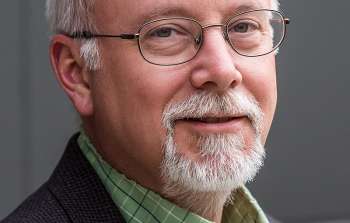sci19070 — Announcement
Opportunity, Partnerships, and Unity
November 18, 2019
Last month’s grand unification — of NOAO with Gemini Observatory and LSST operations — consolidated all of NSF’s nighttime optical-infrared astronomy facilities under one roof, creating the next incarnation of the US national observatory. The new organization, NSF’s National Optical-Infrared Astronomy Research Laboratory (temporarily nicknamed NSF’s OIR Lab), operates five facilities — Cerro Tololo Inter-American Observatory (CTIO), the Community Science and Data Center (CSDC), Kitt Peak National Observatory (KPNO), Gemini Observatory, and the Large Synoptic Survey Telescope (LSST), the first three of which were formerly under NOAO.
Currents sat down with Pat McCarthy, the Lab’s recently appointed Director, to learn his perspective on the Lab’s mission and the opportunities and challenges ahead. Previously the Vice President of the Giant Magellan Telescope project and Astronomer at the Carnegie Institution for Science, Pat began his 5-year term on 1 October 2019.
How do you see the role of the Lab in the US astronomical landscape?
NSF’s OIR Lab is about creating opportunities, both by using the assets we have in new and different ways and by creating a solid platform on which new initiatives can form and grow. The Lab is intended to be a true national center where people from all around the US and our partner communities can come to further their research goals. It is a place where people come to collaborate, where teams coalesce, and where new ideas — as well as projects and teams of all sizes — can find the resources they need to take root and grow. As a focal point for community coordination and collaboration, the Lab makes it easier for the US community to speak with one voice to our funding agencies.
The Lab is also about strategic planning in partnership with our community. We must be ready to support the ground-based OIR initiatives that come out of the 2020 Decadal Survey. But also, as we navigate the coming decade, we need to keep one eye on the far horizon, the 2030’s and beyond. We must sustain the exploration of known scientific horizons as well as the discovery of future horizons.
Sounds exciting. Can you give us an example of a science opportunity that is enabled by the integration of the five facilities?
A good example is time-domain and survey astronomy. These research approaches will be major science drivers in the coming decade — think LSST and other time-domain surveys, multi-messenger astronomy, and large spectroscopic surveys like the Dark Energy Spectroscopic Instrument (DESI). To capitalize on the likely deluge of discoveries, we will need CSDC’s tools to identify and schedule sources for follow up observations, as well as a fleet of telescopes — at CTIO, Gemini Observatory, KPNO, and elsewhere — to carry out follow up observations. With a larger number of telescopes in the mix, we can allocate apertures to specialized roles and carry out observations over a range of time zones. Telescopes at one site can backstop another in the case of bad weather or provide a longer time sampling for variable objects.
What excites you most about the new organization?
In my work at GMT I learned a great deal about the power of large teams working within professional organizations. Teams supported by strong institutions and solid governance structures can accomplish things that simply cannot be done by small groups — the expert professor and her graduate students, for example. We build big teams to do things that we cannot do any other way. This is a driving force behind the formation of NSF’s OIR Lab — with its scale, structure, and governance, we can undertake projects and programs that were previously impossible.
At the same time, astronomy is more diverse than ever before, with discoveries being made and frontiers expanded in many areas, by projects and teams spanning a range of sizes that are funded in different ways. We need to help sustain and grow these diverse efforts. A key lesson I learned in moving from small teams to large organizations is that good leaders empower people, they take chances on people, and they let young people shine. I’m looking forward to what we will accomplish together, in partnership with all parts of our community.
About the Announcement
| Id: |
ID
sci19070
|
